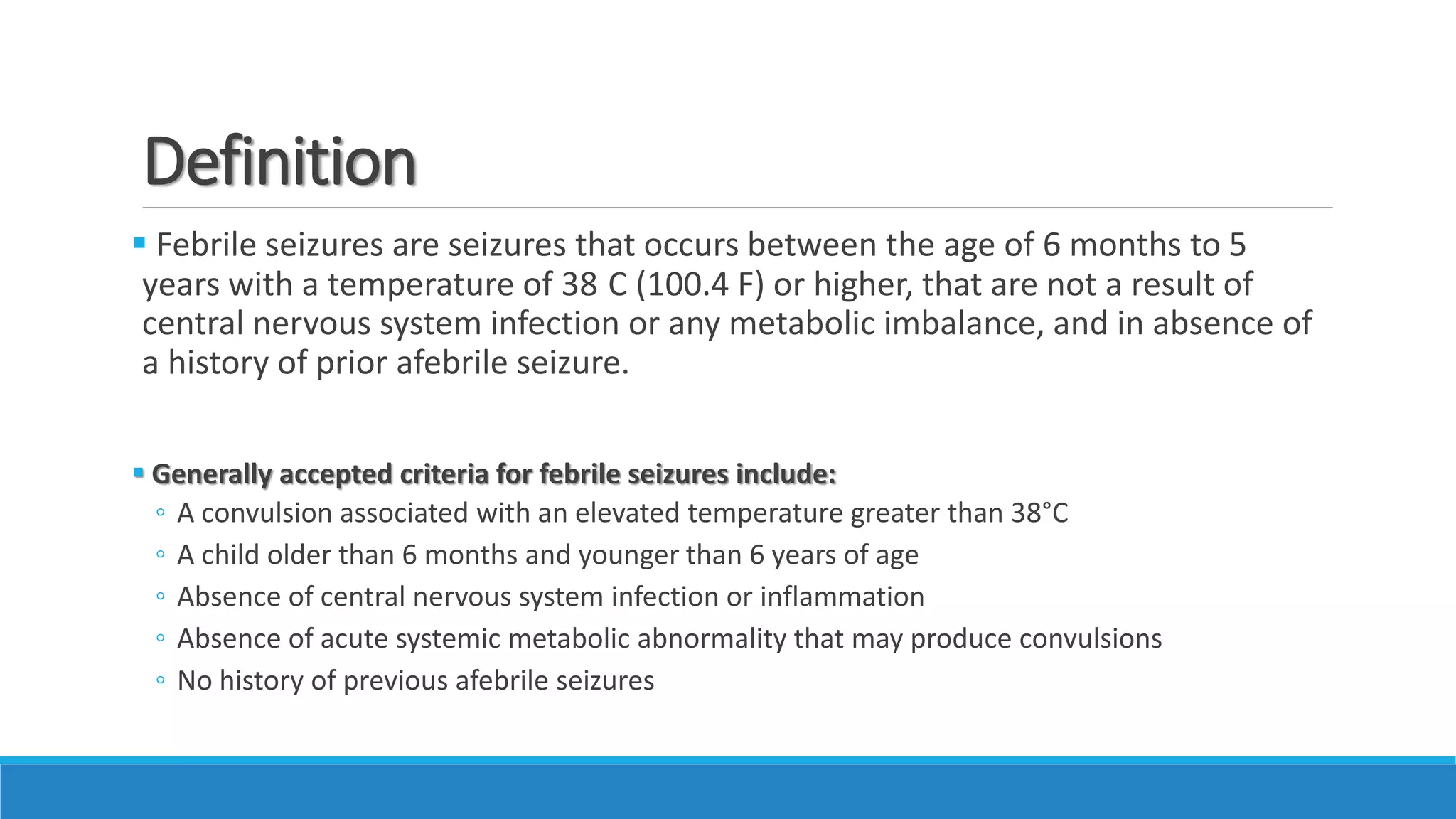This document discusses febrile seizures in children. It defines febrile seizures as seizures occurring between 6 months and 5 years of age associated with a fever over 100.4°F. Febrile seizures are classified as simple or complex based on features such as duration, recurrence, and focal onset. They commonly occur in children aged 6 months to 2 years and are associated with infections. While the majority resolve spontaneously, recurrent seizures or those lasting over 30 minutes require medical treatment. Investigations are usually not needed for simple febrile seizures.



















